This post is a helpful collection of easy and engaging inherited traits activities, lessons and experiments, aligned to NGSS, to teach about inheritance, variation of traits, and heredity in third grade science. The activities address 3-LS3-1 and 3-LS3-2 NGSS for heredity.
What Are Inherited Traits?
Inherited traits are characteristics that have been passed down to a living thing from its parents. They are physical traits the offspring have from birth. Some examples of inherited traits are eye color, fur pattern, and the length of an animal’s legs and tail.
Plants also inherit traits from their parents. Even though plants don’t mate, they reproduce through the process of pollination. Pollen from one plant is carried to another plant by animals, wind, or a variety of adaptations for seed dispersal. The plant then grows seeds which become the offspring of the plant. Some inherited traits of plants include seed shape and color, flower color, leaf shape, and the height of the plant.
10 Easy Inherited Traits Activities
These activities are ideal for teaching your third grade students about inherited traits, variation of traits, and traits influenced by environment.

Inherited Traits Audio Lessons
If your students have access to devices or are learning from home, these inherited traits audio lessons are highly engaging with narrated slides for students to learn independently. There are embedded videos in each lesson that reinforce the concepts and make the lessons even more engaging.
Inherited traits audio science lessons source
The Onion Lab
To teach students that living things have traits we can’t see, I like to do the onion lab. Scientists use all five senses when observing the traits of an organism. Comparing the traits of an onion to a rose provides distinct and obvious differences in smell, stem structure, leaf shape, and more.
Observing traits onion lab source
Parents and Offspring Game
Plants an animals vary in how they look and how they function because they have inherited different traits. Not all living things look exactly like their parents. They may have only one or two physical characteristics of each parent.
This interactive table allows students to determine which offspring are likely to have come from a set of parents by carefully observing their traits. This is a fun way for students to identify traits the offspring has that are similar to one, or both, of the parents.
Parents & offspring traits game source
Variation of Traits
Offspring of the same parents have similar traits, but don’t look exactly like either parent. The differences in organisms from the same parents are called variation.
Living things inherit a combination of traits form both parents. Each individual organism inherits different traits from each parent. It inherits half of its traits from its mother and half from its father. This trait variation sort addresses 3-LS3-1 and give students an opportunity to identify variations of given traits.
Trait varation game source
Make Models of Creature Offspring
For students to explore why offspring have similar traits to their parents but not always to each other have students create creatures. Students build a model of a creature offspring based on the traits of its parents. The models can take a variety of forms. They can be Play Doh or clay, they can be paper, prototypes, and even drawings or diagrams.
Creature offspring traits project source
Students choose a trait strip for each parent, then determine the traits their creature offspring will have based on the information it inherited from its parents.
The Celery Experiment
The traits of plants and animals can be influenced by their diet. Students can easily explore how a plant’s diet can affects its traits by observing the changes that happen when celery is placed in water with food coloring.
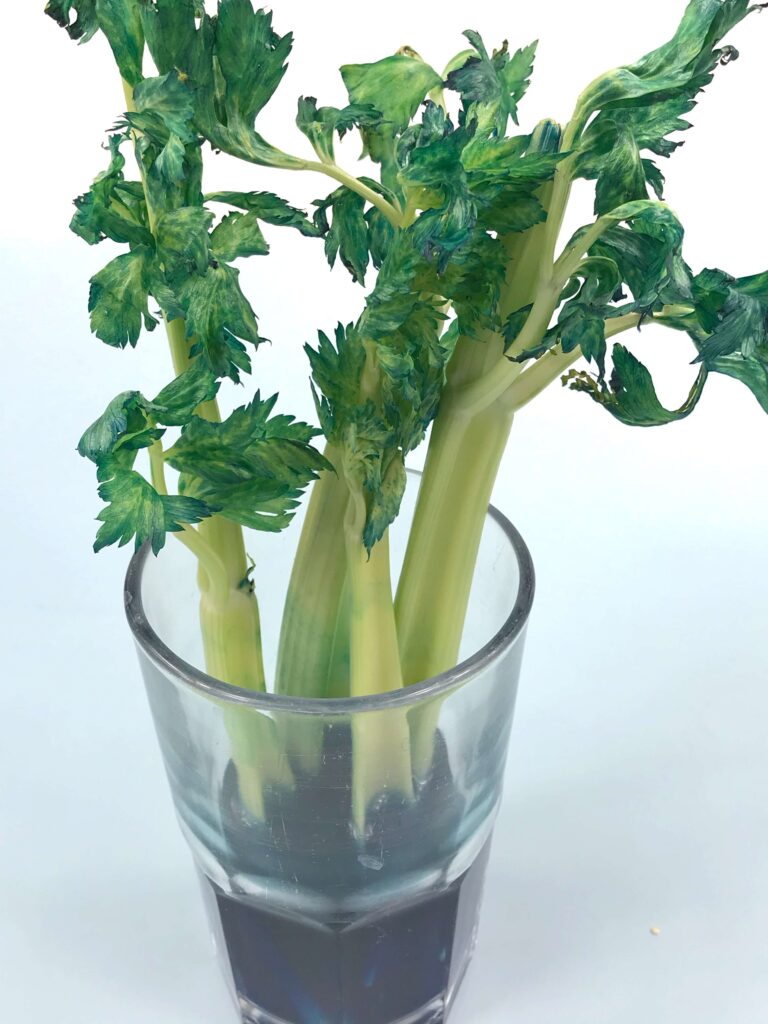
The Yeast Experiment
Pollution is another environmental factor that can influence the traits of plants and animals. Explore how pollution in an environment affects an organism by using dry active yeast and vinegar instead of sugar.
Yeast lab source
Yeasts are living organisms that live in moist places. They need sugar to stay alive and reproduce. Using vinegar as the “pollutant” will inhibit the growth of the yeast.
Traits Influenced By Environment
To further address 3-LS3-1 and highlight cause and effect, I have students sort traits by whether they are inherited traits or traits influenced by environment.
Trait sort source
Explore Variations Within a Group
Data can be collected from many different sources. Photographs are often studied to gain information about the traits of animals. In this activity students use photos to gather data about traits in a family of cats. Next, they organize the data in a chart then use it to find patterns.
Inherited traits activity source
Combine Math & Science
This next activity is ideal for using science content to reinforce math skills, in this case fractions. Teachers often don’t have enough time to fully teach science so embedding science content into your math and literacy centers is helpful.
Math task cards source
Get Your Inherited Traits Lessons Planned for You
All of the activities and labs in this post are found in this complete bundle: Inheritance & Traits for 3rd Grade Science.

Pin this post so you have it when you plan! And if you’re not already, follow us on Pinterest!

Visit these posts for more 3rd grade science ideas:
30 Ideas to Teach Weather & Climate
15 Forces & Motion Activities for 3rd Grade

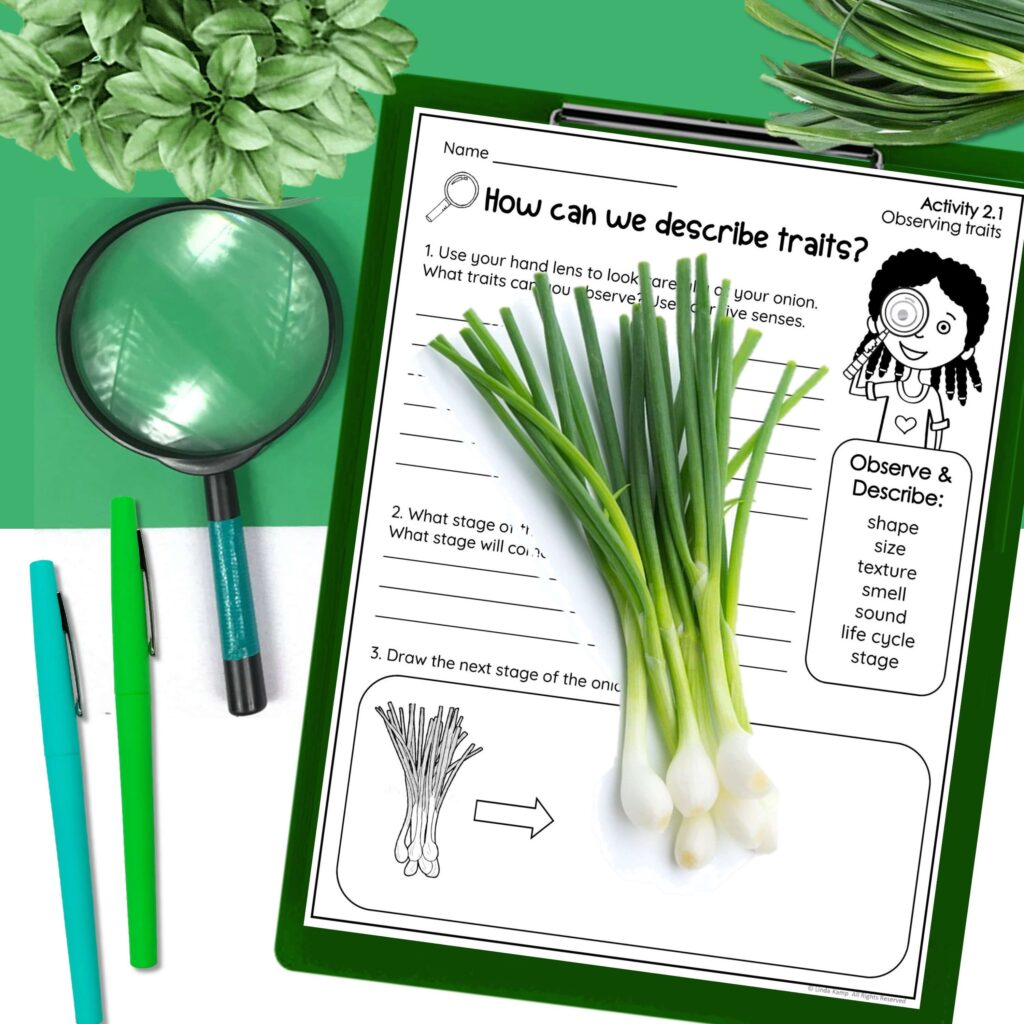
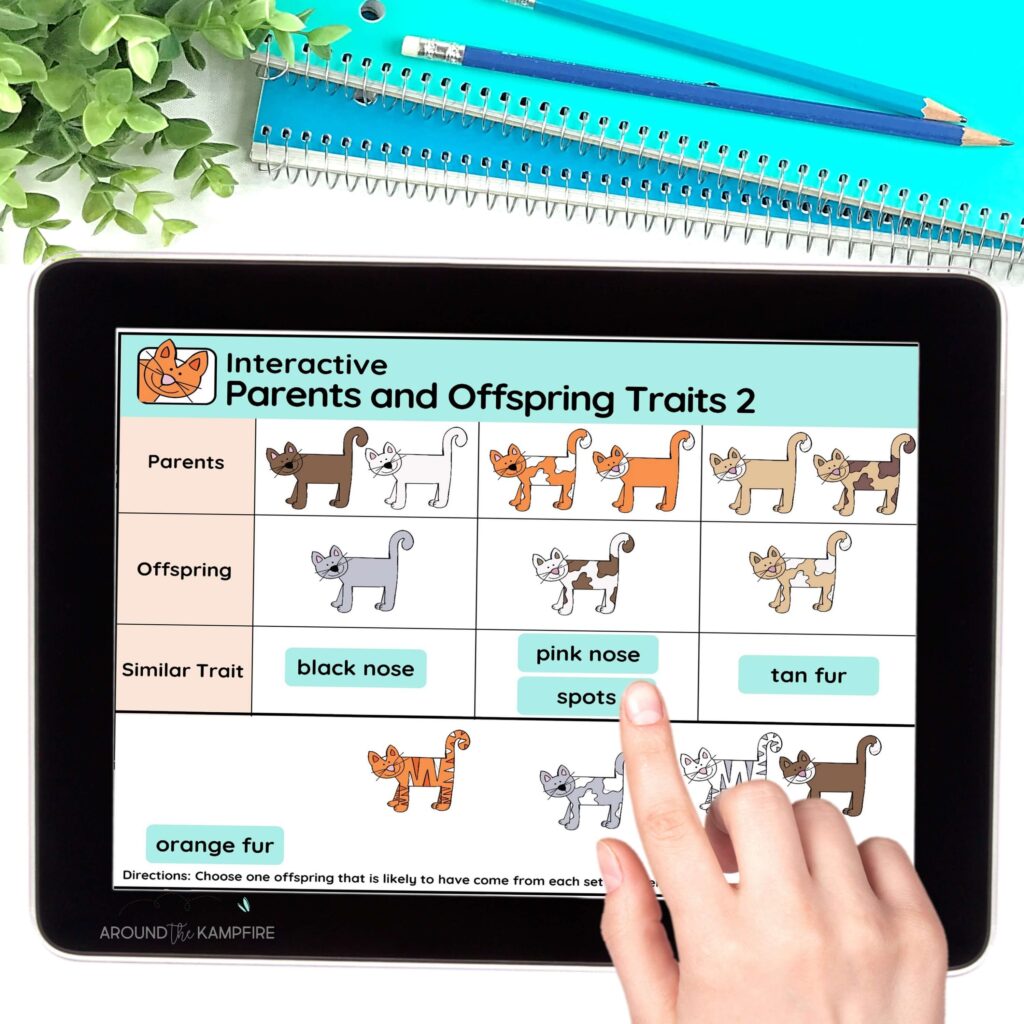


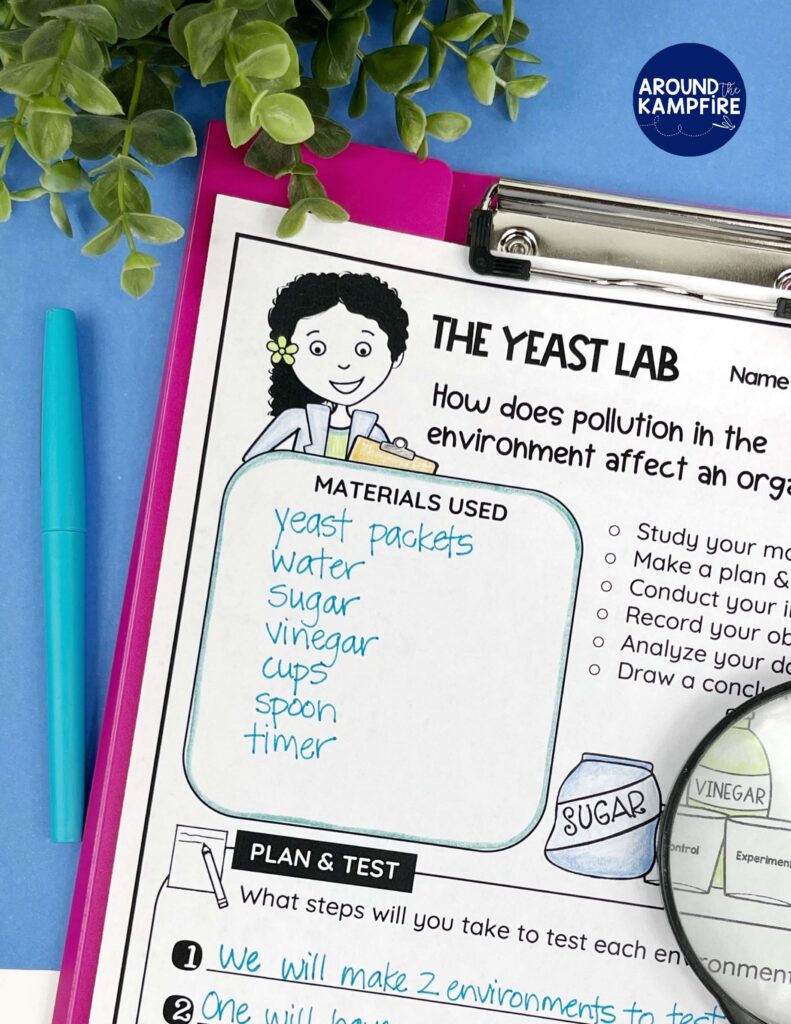
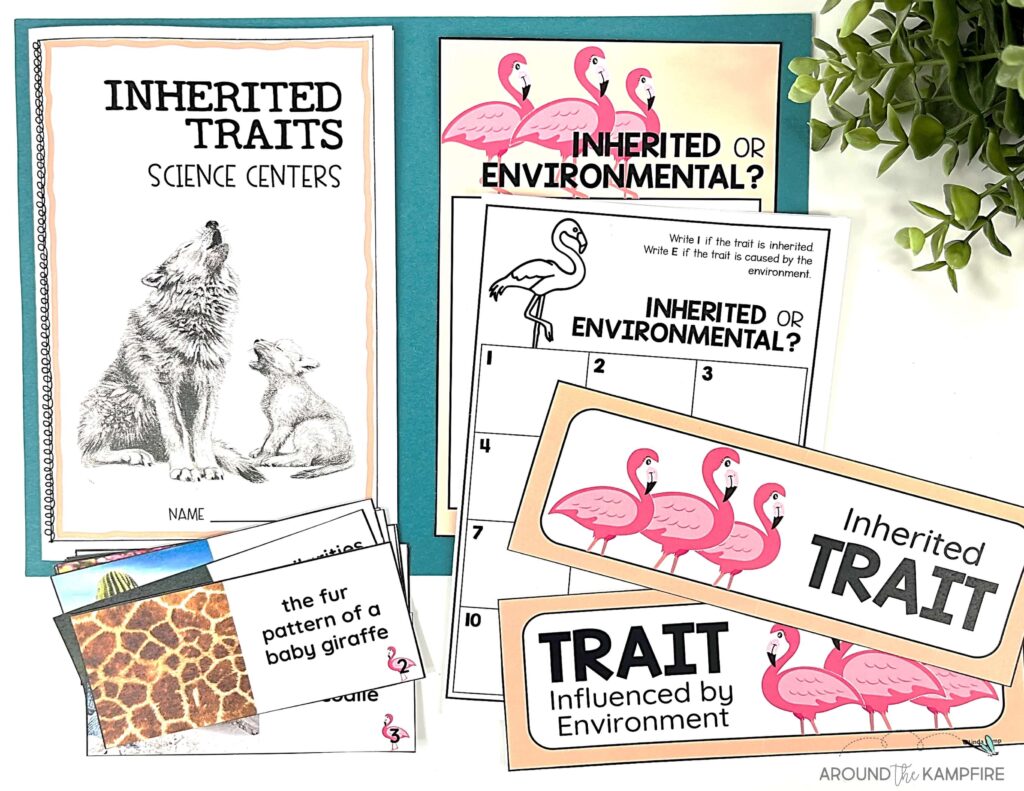
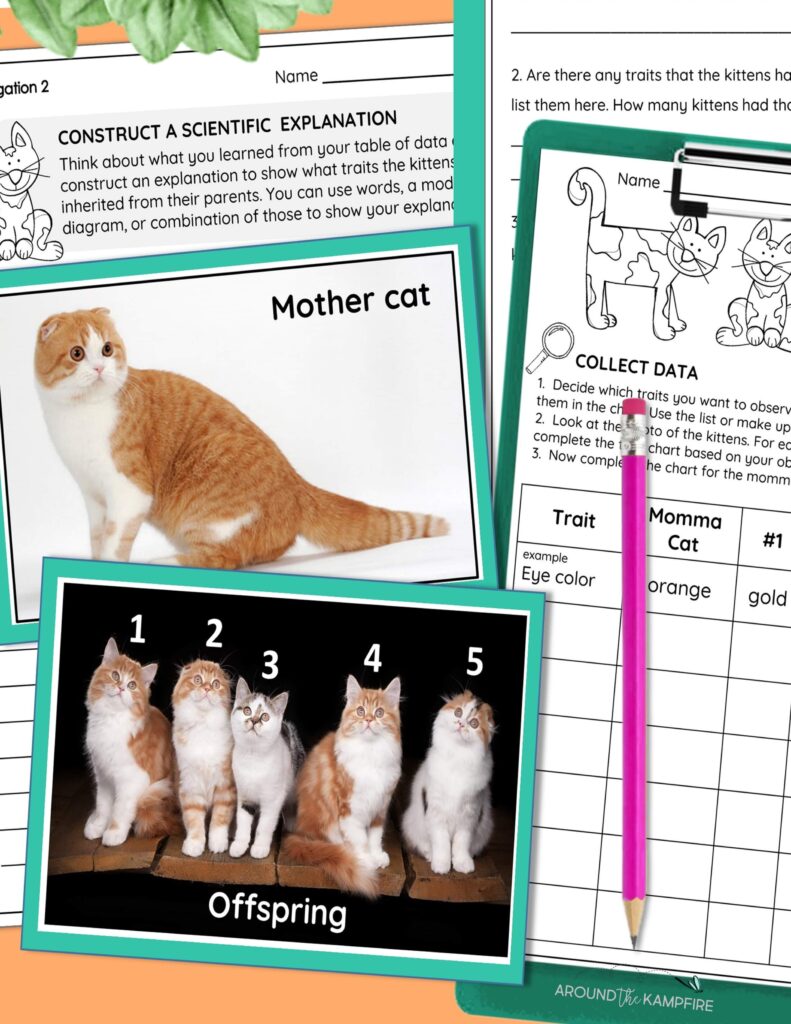

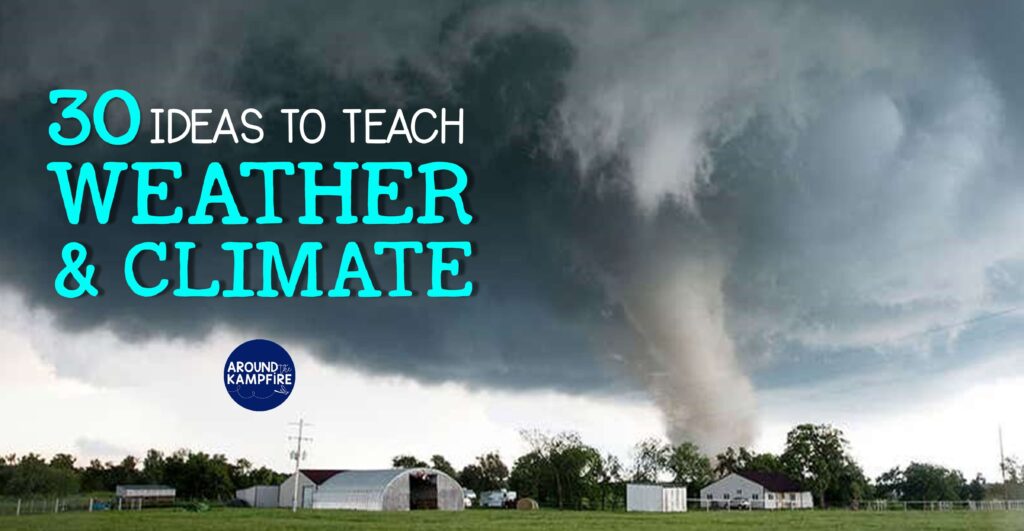
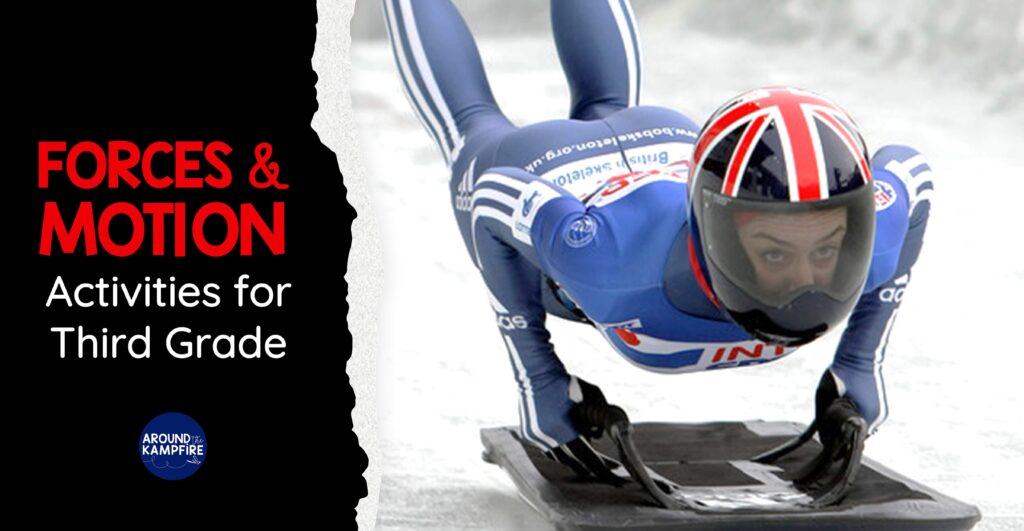
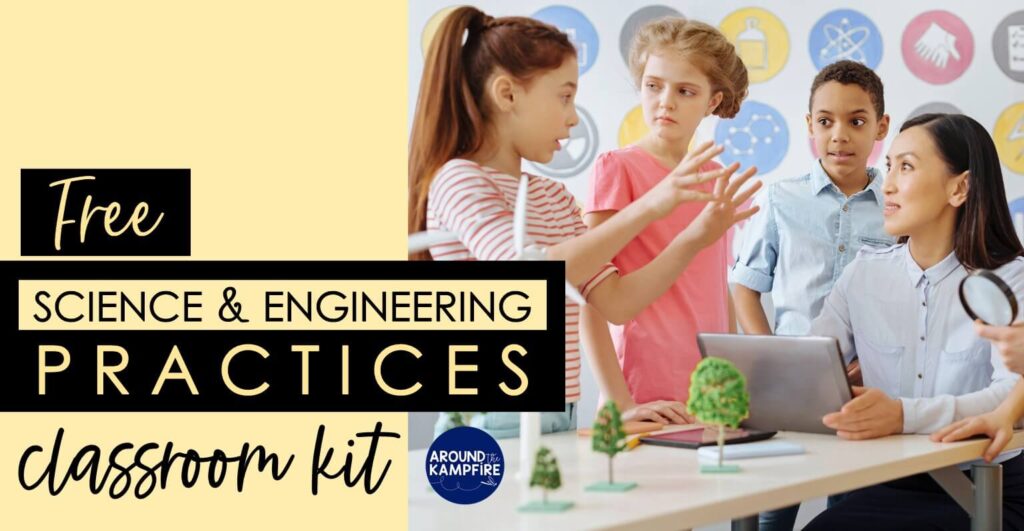

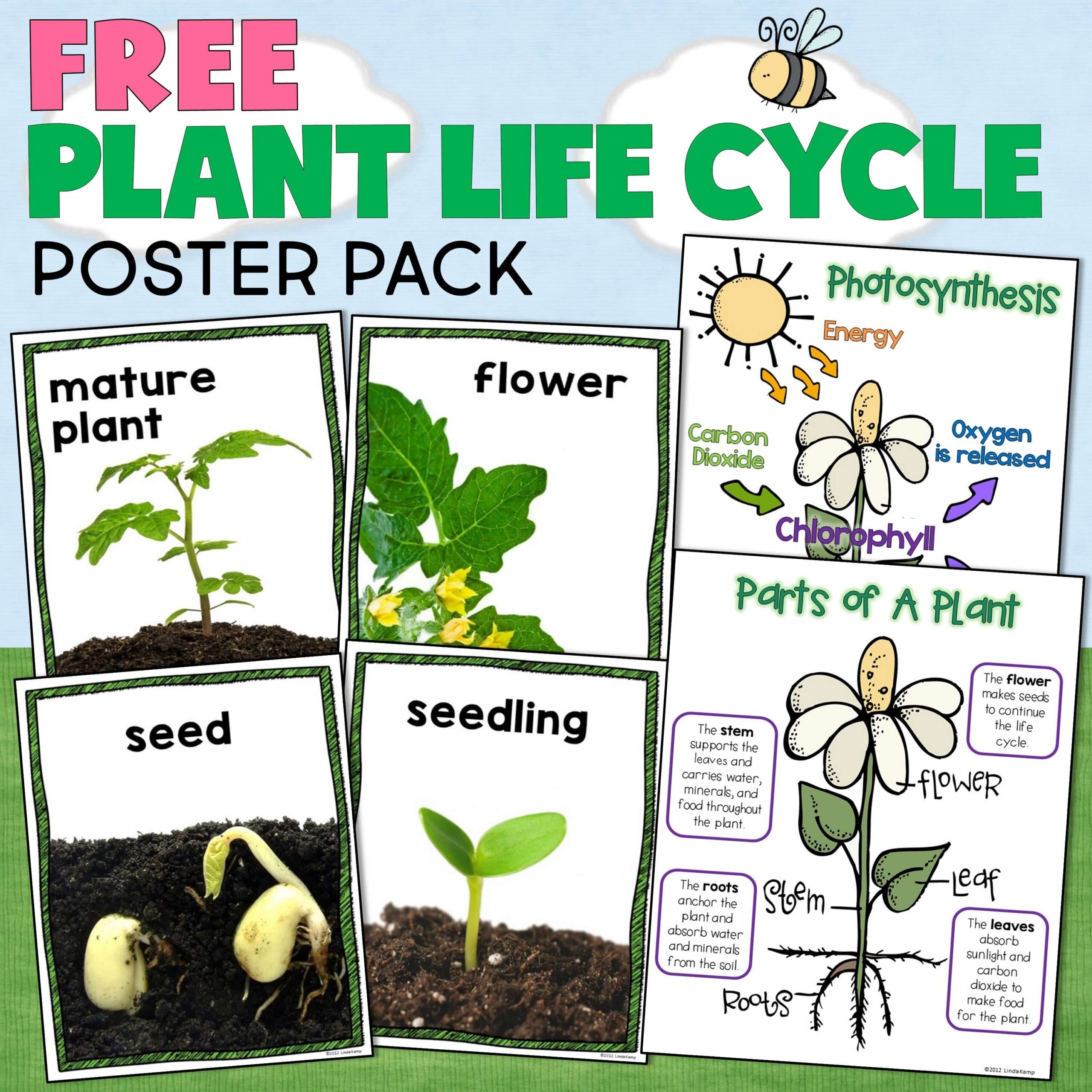
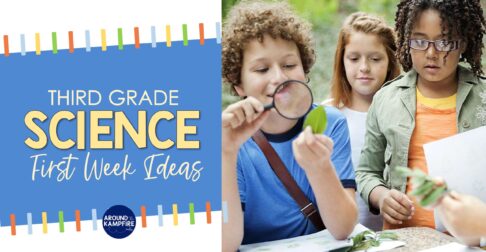






Leave a Comment